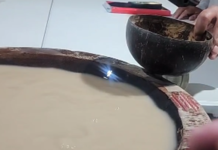Tonga’s inter-island ferry, the MV ‘Otuanga’ofa, was told to stay out of New Zealand waters for three weeks because it posed a biosecurity threat, Kaniva News can reveal.
The ‘Otuanga’ofa arrived in Auckland in September 2022 and was expected to return to the kingdom last October.

New Zealand’s Ministry for Primary Industries told Kaniva News that the ferry was ordered back to sea for being “non-compliant with New Zealand’s biosecurity regulations.”
The Ministry said she was allowed back into port to collect provisions.
However, even though the ferry had been ordered to leave port to be cleaned, there was a delay because vital equipment was not working.
Kent Smith, manager of Maritime New Zealand’s General Regulatory Operations, said his department became aware in early October that the ‘Otuanga’ofa had no functioning AIS (Automatic Identification System) which broadcasts the vessel’s details and location to other vessel’s in the vicinity.
Because the AIS was required as part of the vessel’s safety equipment, Maritime New Zealand detained the vessel for 24 hours to allow the issue to be rectified. The vessel sailed as directed by MPI Biosecurity on the evening of October 6.
“As of mid-February the vessel remains in Auckland,” Smith said.
Sources have reported that the vessel was told to remove marine growths from its hull and eliminate a cockroach infestation.
New Zealand has extremely strict regulations to prevent infestation by foreign species. In January two cruise ships were the subject of action by the Ministry of Primary Industries.
Sources have told Kaniva News the ‘Otuanga’ofa could have been cleaned in Tonga before the vessel arrived here to avoid incurring further costs.
Once the ferry met MPI’s requirements it was allowed back into port and was dry-docked at the Titan Marine Engineering Ltd wharf.
The vessel was expected to sail on January 31, but last night, February 21, was still at the Titan Marine wharf.
There is speculation that the vessel will stay in Auckland into March because more maintenance needs to be done before New Zealand authorities will allow the vessel to sail.
Tonga’s Minister of Transport told a press conference in late January that when the ferry arrived in New Zealand some unforeseen mechanical and electrical issues were identified which were not addressed when the ‘Otuanga’ofa was being repaired in Fiji in 2018.
The ‘Otuanga’ofa was given to Tonga by the Japanese Government in October, 2010 to replace the Princess Ashika, which sank in Tonga’s worst maritime disaster.
MPI regulations
The Ministry for Primary Industries says marine pests and diseases introduced to New Zealand on vessel hulls (biofouling) are regarded as a threat to the country’s marine environment and resources. All vessels arriving in New Zealand must provide evidence of biofouling management prior to arrival.
MPI warns visiting vessels to organise an underwater inspection and act on all biofouling found and to make sure a recent underwater inspection or underwater cleaning report is supplied to MPI.
Vessels that cannot provide verifiable evidence may be ordered to have a hull inspection on arrival to New Zealand. The vessel’s itinerary can be restricted, entry to New Zealand waters can be restricted or MPI can require a hull cleaning within 24 hours of arrival.
Any work is at the expense of the ship’s owner or operator.
Cruise ships
In early January the cruise ship Viking Orion was restricted to visiting approved ports and asked to leave New Zealand waters because of algae on its hull.
Two weeks later the Seven Seas Explorer was ordered to anchor 22 kilometres off Tauranga, outside New Zealand territorial waters, while the hull was cleaned.
A survey of the cruise ship’s hull while she was docked in Auckland revealed tubeworms, barnacles and oysters.







